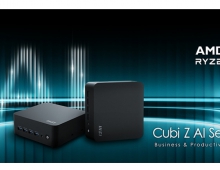MSI FX5950Ultra
8. GLExcess
MSI FX5950 Ultra - Page 8
GLExcess
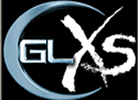 GL
Excess is a very good tool for measuring the performance of VGA cards with
OpenGL applications and games. This benchmark consists of 12 scenes grouped
in 4 categories (3 scenes in 1 category). Each category stress tests different
OpenGL graphical sequences. The overall result named XSMark is the sum of
the first scene of each category. All scenes were run in the 1024x768 resolution
at 32bit.
GL
Excess is a very good tool for measuring the performance of VGA cards with
OpenGL applications and games. This benchmark consists of 12 scenes grouped
in 4 categories (3 scenes in 1 category). Each category stress tests different
OpenGL graphical sequences. The overall result named XSMark is the sum of
the first scene of each category. All scenes were run in the 1024x768 resolution
at 32bit.
- Category 1
 The
first category includes scenes 1, 9 and 12. Nothing specific is stressed in
these scenes. Just average use of general OpenGL techniques.
The
first category includes scenes 1, 9 and 12. Nothing specific is stressed in
these scenes. Just average use of general OpenGL techniques.
The picture you see from scene 12 is made of three shifting and rotating layers, which are textured in 4 blending modes. Nice effect!
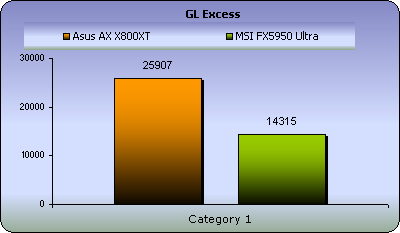
- Category 2
 Scenes
3, 5 and 6 stress the card's 3D particle and polygon processing. Particles
are widely used in games and you see them for example when you fire with a
laser beam or when you light up a torch.
Scenes
3, 5 and 6 stress the card's 3D particle and polygon processing. Particles
are widely used in games and you see them for example when you fire with a
laser beam or when you light up a torch.
All 3 scenes are made with a particle system that stresses the card's polygon count and video memory. The spaceship you see in the picture is made of a very large number of polygons
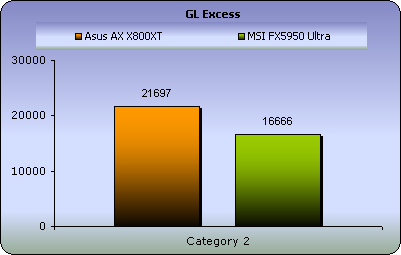
- Category 3
 The
third category sums up scenes 4, 10 and 11 that test the blending ability
of the card. Blending is the mixture of the graphics layers that result in
complicated textures and effects.
The
third category sums up scenes 4, 10 and 11 that test the blending ability
of the card. Blending is the mixture of the graphics layers that result in
complicated textures and effects.
The fill rate of each card is also stressed in these scenes. So this test should be a reference as to the quality of each card.

- Category 4
 Scenes
2 and 7 that constitute this category, having to do with multitexturing effects.
Multitexturing is the process of applying two or more textures to a single
polygon or pixel, in order to provide spectacular images.
Scenes
2 and 7 that constitute this category, having to do with multitexturing effects.
Multitexturing is the process of applying two or more textures to a single
polygon or pixel, in order to provide spectacular images.
Scene 8 uses a sphere map that is mixed to a simple texturing technique in order to give reflection effects. The reflection and shadow effects you see in games are accumulated in the stencil buffer.

XS Marks
XS Marks is the score of the GL Excess benchmark. Keep in mind that this score doesn't sum up the results of all 12 scenes but the score of each category's first scene. The XS Marks you get with your card can be posted on the GL Excess web site to compare it with other scores.
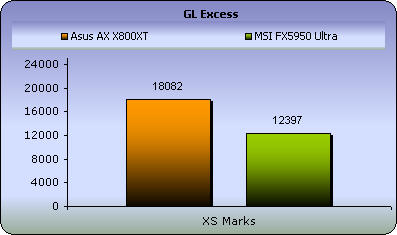
The MSI FX5950 Ultra comes up with an incredible performance in this OpenGL benchmark. If you check out the Category 4 benchmark for multitexturing effects, you'll see an unbelievable chart. There, the FX5950U outperformed the Asus X800XT by a total of 250 marks!
I have to admit I didn't see that coming. ATI's support for OpenGL code is well known, being well behind, but fortunately for ATI owners the company is aware of this and has promised a lot of progress over the following months.

